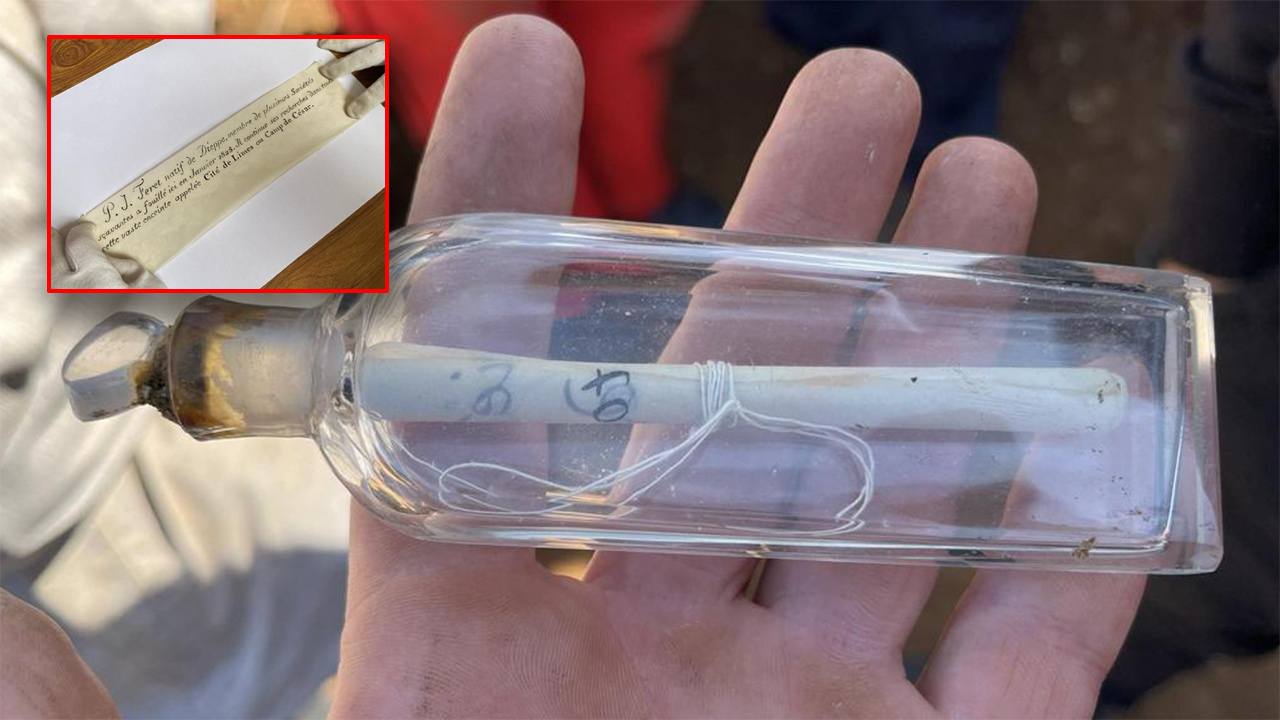200-year-old message in a bottle unearthed

In a discovery that has the archaeology world buzzing (and possibly rolling its ancient eyes), a team of student volunteers in northern France has unearthed something rather unexpected during their dig at a Gaulish village.
While they were hoping for the usual – ancient pottery shards, perhaps a coin or two – they instead stumbled upon what can only be described as the 19th-century equivalent of a DM in a bottle.
The scene played out like a low-budget historical drama: volunteers painstakingly sifting through centuries-old dirt on the cliff-tops near Dieppe when, voilà! They found an earthenware pot containing a small glass vial, like something you might see in a vintage pharmacy, but with fewer essential oils and more existential surprises.
Guillaume Blondel, the team leader and head of the archaeological service for the nearby town of Eu, was immediately intrigued. “It was the kind of vial that women used to wear around their necks containing smelling salts,” he explained, before casually dropping the bombshell: inside the vial was a note.
Cue dramatic music.
After what we can only assume was a long, suspenseful pause, Blondel and his team opened the note, which turned out to be written by none other than P.J. Féret, a 19th-century intellectual who clearly had a flair for both excavation and theatrics.
The note, written with all the panache of a man who had just unearthed Caesar’s salad fork, read:
"P.J. Féret, a native of Dieppe, member of various intellectual societies, carried out excavations here in January 1825. He continues his investigations in this vast area known as the Cité de Limes or Caesar’s Camp."
Naturally, Blondel was floored. “It was an absolutely magic moment,” he said, no doubt imagining Féret winking at him from the beyond. “We knew there had been excavations here in the past, but to find this message from 200 years ago? It was a total surprise.”
Local records confirm that P.J. Féret was indeed the real deal. He wasn’t just a dabbler in dirt – he was a notable dabbler in dirt who had conducted an earlier dig at the site in 1825.
In a stroke of irony not lost on Blondel, he mused, “Most archaeologists prefer to think that there won’t be anyone coming after them because they’ve done all the work.” Féret, however, clearly believed in leaving a trail of breadcrumbs – or, in this case, a literal note in a bottle, just to remind future archaeologists that he got there first. Féret: 1, Modern Archaeology: 0.
Of course, this whole affair raises some important questions: Did Féret expect someone to find this? Did he laugh to himself as he buried it, imagining Blondel’s reaction? Did Féret know how cliff erosion would eventually turn his humble Gaulish village into a treasure trove for future archaeologists? Or was he simply trolling them from the past?
Whatever the case, Féret’s note may not have contained ancient secrets, but it certainly delivered some 19th-century sass. And if we’ve learned anything from this dig, it’s this: archaeology isn’t just about discovering the past – it’s also about being occasionally roasted by it.
As Blondel and his team continue their emergency dig (which was ordered due to cliff erosion eating away at the site like a bad buffet), they’ve already uncovered a number of artefacts, mostly pottery, from around 2,000 years ago. But will any of them have the audacity to leave a note for the archaeologists of 2225?
We’ll have to wait and see. In the meantime, Féret is probably laughing somewhere in the afterlife, shaking his head and muttering, “Amateurs”.
Images: Guillaume Blondel / Facebook
